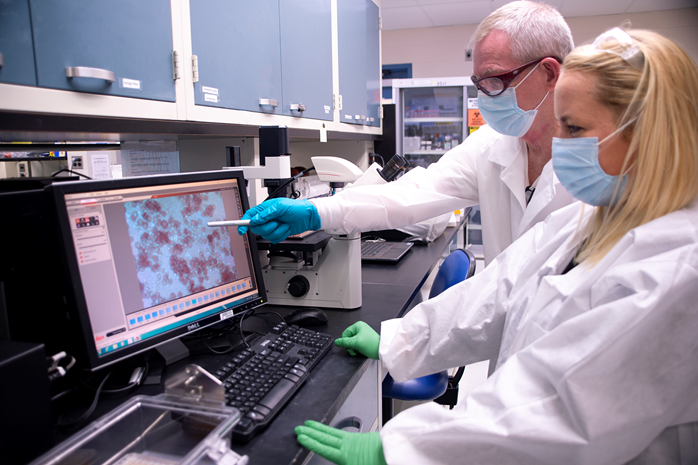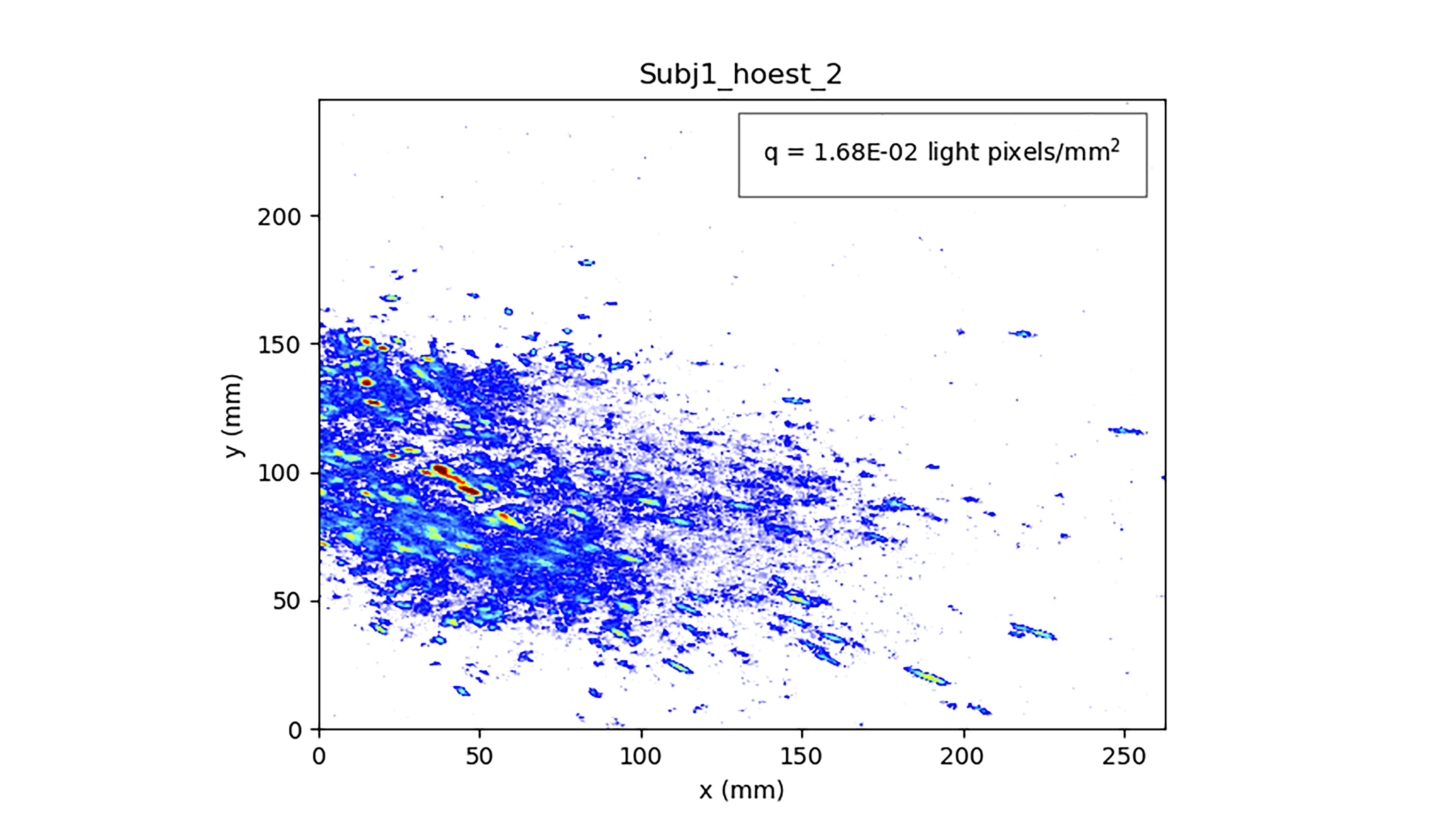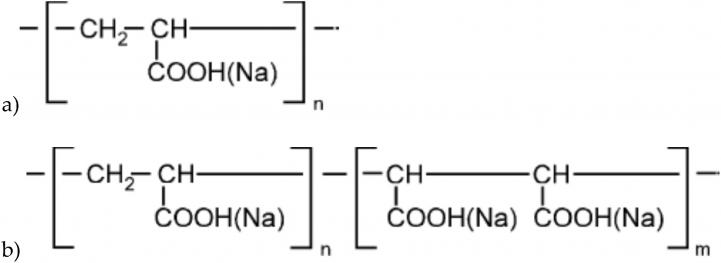A cohort study evaluated how polygenic risk scores (PRS) and polysocial scores (PSS), which include social determinants of health (SDOH) and lifestyle-psychological factors, correlate to risk of coronary heart disease (CHD) by developing a CHD prediction model incorporating these elements.
Tag: Risk Assessment
Media Tip: Cyberthreats are growing – so are patents for technology to combat them
Patent data analysis highlights the leading companies in cybersecurity innovations At a time when public trust has been undermined by strings of cyberattacks and cyber spying, IFI CLAIMS Patent Services – the industry’s most trusted patent data provider – has…
‘Molecular Compass’ points way to Reduction of Animal Testing
In recent years, machine learning models have become increasingly popular for risk assessment of chemical compounds. However, they are often considered ‘black boxes’ due to their lack of transparency, leading to scepticism among toxicologists and regulatory authorities. To increase confidence in these models, researchers at the University of Vienna proposed to carefully identify the areas of chemical space where these models are weak. They developed an innovative software tool (‘MolCompass’) for this purpose and the results of this research approach have just been published in the prestigious Journal of Cheminformatics.
New Integrated Risk Analysis Framework Enhances Cybersecurity for SMEs
MARISMA is a risk analysis framework designed to improve cybersecurity for businesses by offering adaptive, real-time protection for digital assets against evolving threats.
New Research Supports Expansion of Kidney Donation to Include Organs from Deceased Patients Who Once Had Dialysis
Researchers from Johns Hopkins Medicine propose a novel approach to addressing the pressing issue of a kidney donor shortage through findings that suggest a promising method to expand the pool of available kidney donors by utilizing deceased donors on dialysis for kidney transplants.
Covid vaccine for pregnant women safe for newborn infants
No increased risks for babies, and for some serious neonatal complications lower risks.
Risk of viral airborne transmission peaks within 5 seconds of face-to-face encounters
he main transmission routes identified initially for the novel coronavirus infection were droplet and contact transmission. Airborne transmission by aerosol particles was eventually identified as one of the most likely transmission routes.
Artificial intelligence may help predict infection risks after implant-based breast reconstruction
Artificial intelligence (AI) techniques may provide a more accurate approach to predicting the risk of periprosthetic infection after implant-based breast reconstruction, reports a study in the November issue of Plastic and Reconstructive Surgery®, the official medical journal of the American Society of Plastic Surgeons (ASPS).
Does diabetes affect the survival of individuals with colorectal cancer?
Study reveals a link between complicated diabetes and a higher risk of death
Revised Framework for Reviewing Potential Carcinogens to Reduce Animal Testing
More reliance on modeling and test tube-based data to lower reliance on test animals.
Study finds secondhand smoke may be source of lead exposure in children
Lead exposure has long been a known health risk, especially for young children. Research has found that even at low levels, chronic exposure to lead can cause damage to the brain and other organs and cause problems with cognitive and motor skills.
Detecting risk of metastatic prostate cancer in Black men
To explore prostate cancer disparities, researchers looked to another disorder, diabetes. They conducted a clinical trial and report four biomarkers linked to a higher risk of metastatic prostate cancer in men of West African heritage. They will present their results at ACS Fall 2023.
Current evidence identifies health risks of e-cigarette use; long-term research needed
Research increasingly reveals health risks of e-cigarette use, and more studies are needed about the long-term impact e-cigarettes may have on the heart and lungs.
Predicting Falls in Rehabilitation: A Comparison of Three Instruments Including Hester Davis
Abstract Purpose The aim of this study was to evaluate the ability of the Hester Davis Scale (HDS), Section GG, and facility fall risk assessment scores to predict patients who fall during inpatient rehabilitation. Design This study was an observational quality improvement…
Amid volumes of mobile location data, new framework reduces consumers’ privacy risk, preserves advertisers’ utility
In a new study, researchers used machine learning to create and test a framework that quantifies personalized privacy risks; performs personalized data obfuscation; and accommodates a variety of risks, utilities, and acceptable levels of risk-utility tradeoff.
Join Us As IAFNS Convenes Food Science, Regulatory Experts at National Press Club June 13-14
Annual conference speakers to address cutting-edge nutrition and food safety topics.
Minoan eruption survey improves volcanic risk assessments
An international team of researchers led by marine geoscientist Dr. Jens Karstens of GEOMAR Helmholtz Centre for Ocean Research Kiel has now, for the first time, combined the latest geophysical and geological methods to resurvey the Minoan eruption, which took place 3,600 years ago, of the Greek island of Santorini.
Machine learning can help to flag risky messages on Instagram while preserving users’ privacy
As regulators and providers grapple with the dual challenges of protecting younger social media users from harassment and bullying, while also taking steps to safeguard their privacy, a team of researchers from four leading universities has proposed a way to use machine learning technology to flag risky conversations on Instagram without having to eavesdrop on them. The discovery could open opportunities for platforms and parents to protect vulnerable, younger users, while preserving their privacy.

Retinal microvasculature is a potential biomarker for acute mountain sickness
This study is led by Dr.Ningli Wang and Dr.Yuan Xie (Beijing Tongren Hospital, Capital Medical University), they provide evidence that retinal microvasculature is a potential biomarker for cerebral microvasculature changes and acute mountain sickness(AMS) development during risk assessment of individuals at high altitudes.
Smart watches could predict higher risk of heart failure
The peer-reviewed study, published in The European Heart Journal – Digital Health, looked at data from 83,000 people who had undergone a 15-second electrocardiogram (ECG) comparable to the kind carried out using smart watches and phone devices.
Gender dysphoria in young people is rising—and so is professional disagreement
More children and adolescents are identifying as transgender and offered medical treatment, especially in the US. But some providers and European authorities are urging caution because of a lack of strong evidence.
NIH-Funded Research to Develop Pneumonia Severity Prediction Tool to Improve Emergency Care of Children
Todd Florin, MD, MSCE, from Ann & Robert H. Lurie Children’s Hospital of Chicago recently was awarded a $5.8 million grant from the National Heart, Lung, and Blood Institute (NHLBI) for a multicenter study to derive and broadly validate the first emergency department (ED)-based pediatric community-acquired pneumonia severity (PedCAPS) score. This objective score will help avoid many unnecessary hospitalizations in children at low risk of severe outcomes, while targeting more focused therapies towards the lower proportion of children at highest risk for severe disease.
New Safety Assessment Assays Explored in Latest Issue of Toxicological Sciences
The December 2022 issue features 10 articles on the latest research in toxicology.
It’s not them, it’s you: Why potatoes don’t deserve their bad reputation
With low or no-carbohydrate diets rising in popularity in recent times, the humble potato is now regularly overlooked in favour of other vegetables.
SEIR Model to Address the Impact of Face Masks amid COVID-19 Pandemic
When vaccines are not available, alternative strategies are required to decrease SARS-CoV-2 transmission. Behavior of the population and government regulations, such as hand hygiene, quarantine of exposed persons, isolation of symptomatic persons, and travel restriction, play an essential role in…
World taking measures on climate change – but are they the right ones?
A new study co-authored by the University of Delaware’s A.R. Siders revealed growing evidence that people and organizations are responding to climate change with a wide range of actions, but noted far fewer studies explore whether these actions actually reduce risks associated with climate change.

Protecting Food from the Farm to Our Plates
S&T collaborates with DHS experts to ensure that the food we eat and our agricultural supply are safe.
Collaborative Nutrition and Food Research Institute Welcomes New Project Ideas
The Institute for the Advancement of Food and Nutrition Sciences (IAFNS) today is opening a free online portal for the public to submit ideas on science projects related to nutrition and food safety.
Assessing the Outbreak Risk of Epidemics Using Fuzzy Evidential Reasoning
While epidemic diseases (EDs) continue to pose a challenging risk that endangers public health, they tend to attract little attention regarding risk assessment in the current literature. Tackling ED risks becomes complicated when the needed advanced techniques designed to assess…
Can Doctors Predict Which Children with Pneumonia Will Develop Mild or Severe Disease?
Currently, there are no evidence-based rules that help physicians in the Emergency Department (ED) predict if a child with community-acquired pneumonia will have a mild disease course that can be treated at home or a more severe illness that requires hospitalization. A recent study published in the journal Pediatrics found that the predictive accuracy of clinical judgement was generally fair, but clinicians were least accurate when predicting progression to severe disease in children initially classified as having “low to moderate” risk, which accounts for a large portion of children presenting with pneumonia.
Bisphenol A, Metabolic Profiling, and More Featured in April 2021 Toxicological Sciences
Toxicological Sciences features leading research in toxicology in the April 2021issue, including on the topics of organ-specific toxicology as well as regulatory science, risk assessment, and decision-making.
New Estimates of ‘Safe’ Levels of Exposure to Peanut Protein for U.S. Population
Paper on dose-response relationship evaluated for peanut allergy in clinical trial screening published
MAPPING COVID RISK IN URBAN AREAS: A WAY TO KEEP THE ECONOMY OPEN
As COVID-19 vaccines slowly roll out across the world, government officials in densely populated countries must still manage vulnerable communities at highest risk of an outbreak. In a new study published in the journal Risk Analysis, researchers in India propose a COVID Risk Assessment and Mapping (CRAM) framework that results in a zoned map that officials can use to place more targeted restrictions on high-risk communities. Successfully used by officials in Jaipur at the peak of the pandemic last spring, their framework could help other vulnerable countries avoid a shutdown of their regional economies.
Rutgers Expert Available to Discuss Coronavirus Risks a Year After Lockdowns Began
New Brunswick, N.J. (March 11, 2021) – Rutgers University–New Brunswick Professor Donald W. Schaffner is available for interviews on the likelihood of becoming infected by the SARS-CoV-2 coronavirus via shopping, groceries, surfaces and airborne/aerosol transmission after a year of lockdowns due to the global pandemic.…

Hand-Held Device Measures Aerosols for Coronavirus Risk Assessment
Understanding aerosol concentrations and persistence in public spaces can help determine infection risks. However, measuring these concentrations is difficult, requiring specialized personnel and equipment. Now, researchers demonstrate that a commercial hand-held particle counter can be used for this purpose and help determine the impacts of risk-reducing measures, like ventilation improvements. They describe the quick and easy, portable process in the journal Physics of Fluids.
DHS Awards $1.96M to Small Businesses to Develop Network Modeling Tools for Risk Assessment
Two U.S. small businesses were awarded a total of $1.96 million in funding through the DHS SBIR Program to develop tools that will support dynamic network modeling for risk management to emergency communication networks.
Next-Generation Risk Assessment, Antimicrobials, and More Featured in July 2020 Toxicological Sciences
Published in this month’s edition of Toxicological Sciences are articles on biotransformation, toxicokinetics, and pharmacokinetics; developmental and reproductive toxicology; nanotoxicology; and more.

Research: Key Detergent Polymers Pose Low Risk to Surface Waters
Newly published research indicates that an important ingredient used in detergents and cleaning products pose a low ecological risk to waterways. The study, “Environmental risk assessment of polycarboxylate polymers used in cleaning products in the United States,” is published in Chemosphere and is now available via open access. The research was conducted by American Cleaning Institute (ACI), Integral Consulting, Inc. and The Procter and Gamble Company.

Good Night? Satellite Data Uncovers Dolphins on the Move at Nighttime
More than 1,000 bottlenose dolphins live in Florida’s Indian River Lagoon year-round. Although extensively studied, what they do at nighttime is still a mystery. Using satellite telemetry, scientists provide the first documentation that these dolphins have a larger range that encompasses more habitats than previously thought. They regularly leave the brackish waters of the estuarine system and, not only travel into the ocean, but swim substantial distances – up to 20 kilometers – up freshwater rivers, creeks, and canals.
Read-Across of Chemical Hepatotoxicants; Exposure-Based Cholinergic Synaptic Functional Deficits; and More Featured in April 2020 Toxicological Sciences
The April 2020 issue of the Society of Toxicology’s official journal, Toxicological Sciences, features leading research in toxicology, including several manuscripts covering emerging technologies, methods, and models.
Experts in Investing, Teleworking w/Kids at Home, New Grad Job Seeking, Global Markets, Entrepreneurship, Economic Risk Assessment Related to Covid-19
Experts from the University of Maryland’s Robert H. Smith School of Business are available to speak about wide range of business and economics topics related to the coronavirus pandemic. This will be updated. Contact them directly or via Greg Muraski…
Is the Coronavirus Outbreak of Unnatural Origins?
Did coronavirus mutate from a virus already prevalent in humans or animals or did it originate in a laboratory? As scientists grapple with understanding the source of this rapidly spreading virus, the Grunow-Finke assessment tool (GFT) may assist them with determining whether the coronavirus outbreak is of natural or unnatural origins.

Aversion to Risk by R&D Managers May Hurt U.S. Economic Prospects
While concerns loom over an impending recession caused by the spread of COVID-19, policymakers and business leaders have implemented radical strategies, such as slashing interest rates to invigorate the U.S.’s weakened economy. Research and Development (R&D) has long been key in the nation’s economic prospects and according to new research from the University of California San Diego, the country’s ability to maintain its competitive edge in this area largely depends on managers in R&D being less averse to risk.
The Nose Knows: Study Establishes Airborne Exposure to Harmful Algal Blooms’ Toxins
There are no limits specific to airborne concentrations of microcystins (blue-green algae) or inhalation guidelines. Little is known about recreational and occupational exposure to these toxins. New research provides evidence of aerosol exposure to microcystins in coastal residents. Researchers detected microcystin in the nasal passages of 95 percent of the participants; some who reported no direct contact with impacted water. Results also showed higher concentrations among occupationally exposed individuals and demonstrated a relationship between nasal and water microcystin concentrations.

New ACI Guidance Provides Pathways for Stewardship of Enzyme-containing Consumer Products
Enzymes bring significant benefits to laundry and cleaning products, including improved cleaning efficiencies. An updated publication from the American Cleaning Institute (ACI) provides a framework for consumer product manufacturers to develop appropriate risk management strategies to avoid unacceptable risks to the users of new products containing enzymes.

New Transmission Model for Ebola Predicted Latest Uganda Cases
MANHATTAN, KANSAS — A new risk assessment model for the transmission of Ebola accurately predicted its spread into the Republic of Uganda, according to the Kansas State University researchers who developed it. Caterina Scoglio, professor, and Mahbubul Riad, doctoral student, both…

As ‘Orange is the New Black’ Ends, UNLV Professor Explores How Conditions Have Changed for Incarcerated Women
The Litchfield Correctional Facility in upstate New York might be the fictitious background of Netflix’s hit series “Orange is the New Black.” But the stories of the inmates — portrayed by Hollywood actresses — could be easily found throughout real…